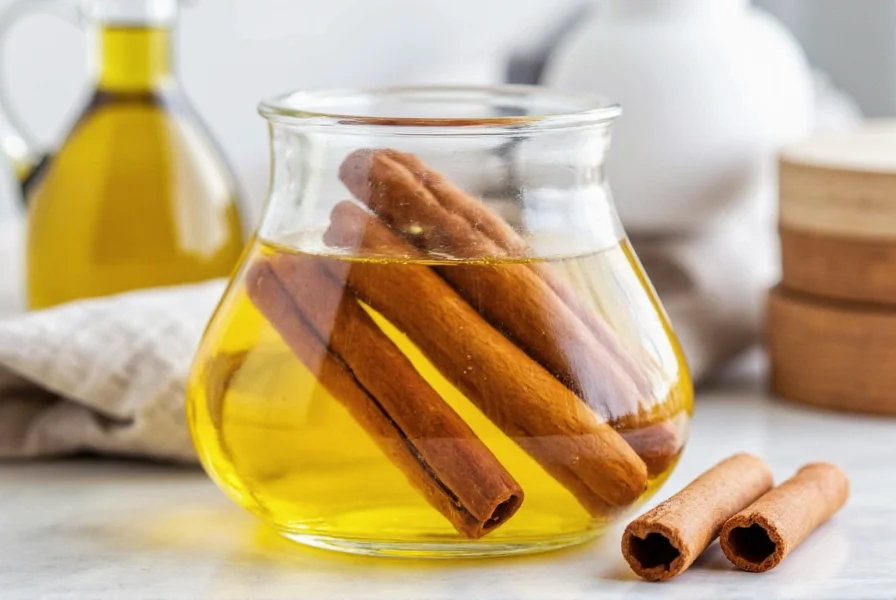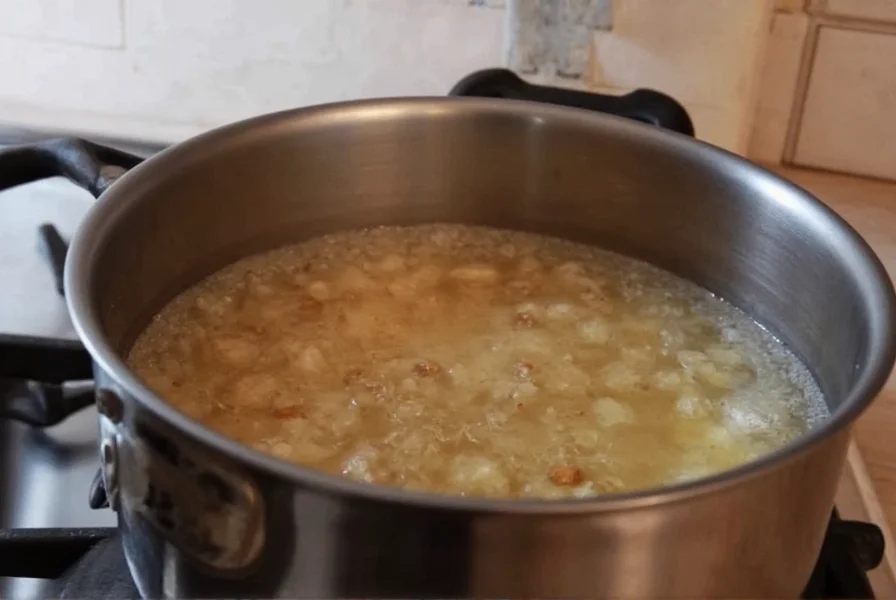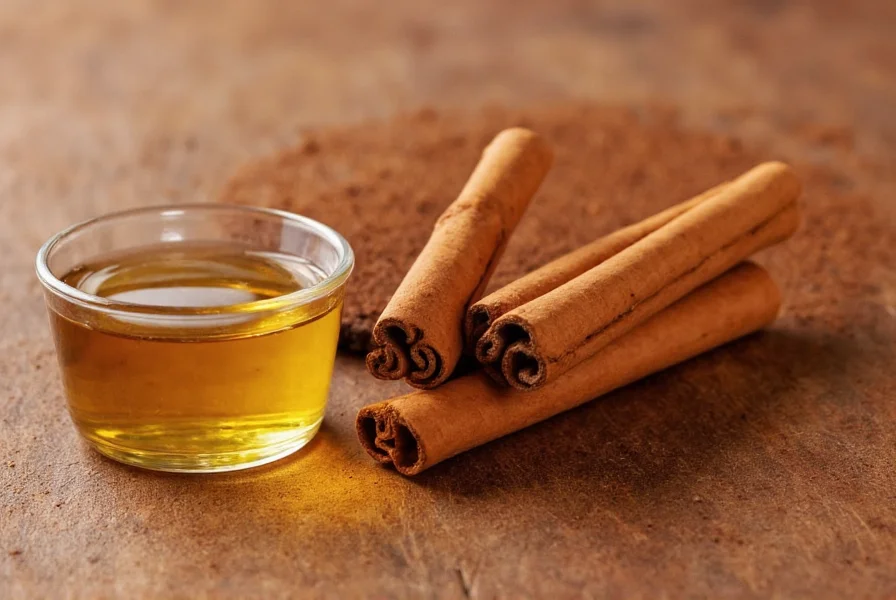Making your own cinnamon oil at home is a straightforward process that allows you to create a natural product for aromatherapy, massage, or household uses. Unlike commercial essential oils which require steam distillation equipment, homemade cinnamon oil uses simple infusion techniques accessible to anyone. This guide provides evidence-based methods that prioritize safety while delivering effective results.
Understanding Cinnamon Oil and Its Applications
Cinnamon oil derived from Cinnamomum verum (true cinnamon) or Cinnamomum cassia contains cinnamaldehyde, the compound responsible for its distinctive aroma and potential benefits. While commercial essential oils undergo steam distillation, home infusion creates a milder oil perfect for topical applications when properly diluted. Common uses include:
- Aromatherapy for mental clarity and focus
- Diluted topical applications for muscle massage
- Natural household cleaner ingredient
- DIY candle and soap making
- Seasonal home fragrance
Safety note: Never apply undiluted cinnamon oil directly to skin as it may cause irritation. Always dilute to 1-2% concentration (5-10 drops per ounce of carrier oil) for topical use. Keep away from children and pets, and perform a patch test before widespread use.
Two Effective Methods for Making Cinnamon Oil
You can create quality cinnamon oil using either cold infusion (longer but preserves delicate compounds) or heat infusion (faster but requires careful temperature control). Both methods yield usable oil, but with different characteristics.
| Method | Time Required | Oil Strength | Best For |
|---|---|---|---|
| Cold Infusion | 2-6 weeks | Moderate | Daily therapeutic use, sensitive applications |
| Heat Infusion | 2-3 hours | Stronger | Household cleaning, stronger fragrance needs |
Step-by-Step: Cold Infusion Method
The cold infusion method produces a more delicate oil that preserves heat-sensitive compounds. This homemade cinnamon essential oil technique requires minimal equipment:
- Gather 1 cup of high-quality carrier oil (olive, almond, or jojoba), 3-4 cinnamon sticks (broken into 1-inch pieces), and a clean glass jar with airtight lid
- Place broken cinnamon sticks in the jar and cover completely with carrier oil
- Seal the jar tightly and store in a cool, dark place
- Shake gently once daily for 2-6 weeks (longer infusion = stronger oil)
- Strain through cheesecloth into a clean amber glass bottle
- Label with date and ingredients

Step-by-Step: Heat Infusion Method
When you need cinnamon stick oil recipe results more quickly, the heat infusion method works effectively:
- Combine 1 cup carrier oil and 3-4 broken cinnamon sticks in a double boiler
- Heat on lowest setting for 2-3 hours (never exceed 100°F/38°C)
- Monitor constantly to prevent overheating which degrades quality
- Remove from heat and let cool completely
- Strain through fine mesh or cheesecloth
- Store in dark glass container away from heat and light

Proper Storage and Safety Guidelines
Correct storage determines your DIY cinnamon oil recipe longevity and effectiveness. Follow these evidence-based recommendations:
- Always use amber or cobalt glass bottles to protect from light degradation
- Store in a cool, dark place (ideal temperature: 60-70°F/15-21°C)
- Properly stored oil maintains quality for 6-12 months
- Never use plastic containers as cinnamon oil can degrade plastic
- Always label with creation date and dilution ratio
For safe topical application, maintain a 1-2% dilution ratio (5-10 drops per ounce of carrier oil). Higher concentrations risk skin irritation. Cinnamon oil is not recommended for internal use without professional guidance.
Troubleshooting Common Issues
When making cinnamon oil infusion method at home, you may encounter these issues:
- Weak scent: Extend infusion time or use more cinnamon material
- Cloudiness: Strain through finer material like coffee filter
- Separation: Gently warm and remix, then store at consistent temperature
- Rancidity: Discard and restart with fresh carrier oil (signs include sour smell)
Maximizing Your Homemade Cinnamon Oil
For best results with your natural cinnamon oil preparation, consider these professional tips:
- Use Ceylon cinnamon (Cinnamomum verum) for a milder, sweeter oil
- Grind cinnamon sticks slightly before infusion to increase surface area
- Combine with complementary oils like orange or clove for custom blends
- Test small batches before making larger quantities
- Keep detailed notes on ratios and methods for consistent results
Frequently Asked Questions
Can I make true essential oil at home without special equipment?
No, true essential oil requires steam distillation equipment to extract the volatile compounds. What you can make at home is an infused oil that contains some cinnamon properties but is milder than commercial essential oil.
What's the best carrier oil for cinnamon oil infusion?
Olive oil works well for general use, while jojoba oil offers longer shelf life. For therapeutic applications, fractionated coconut oil provides neutral scent and good absorption. Choose high-quality, cold-pressed carrier oils for best results.
How do I know when my homemade cinnamon oil is ready?
Your oil is ready when it has a rich cinnamon color and strong aroma. For cold infusion, this typically takes 2-6 weeks. For heat infusion, the oil should smell distinctly cinnamon after 2-3 hours of gentle warming.
Can I use ground cinnamon instead of sticks?
Yes, but you'll need to strain carefully as ground cinnamon creates sediment. Use 2-3 tablespoons of ground cinnamon per cup of carrier oil. Note that sticks generally produce clearer oil with less residue.
Is homemade cinnamon oil safe for skin application?
Only when properly diluted to 1-2% concentration (5-10 drops per ounce of carrier oil). Always perform a patch test 24 hours before broader use, as cinnamon can cause skin irritation in some individuals.











 浙公网安备
33010002000092号
浙公网安备
33010002000092号 浙B2-20120091-4
浙B2-20120091-4